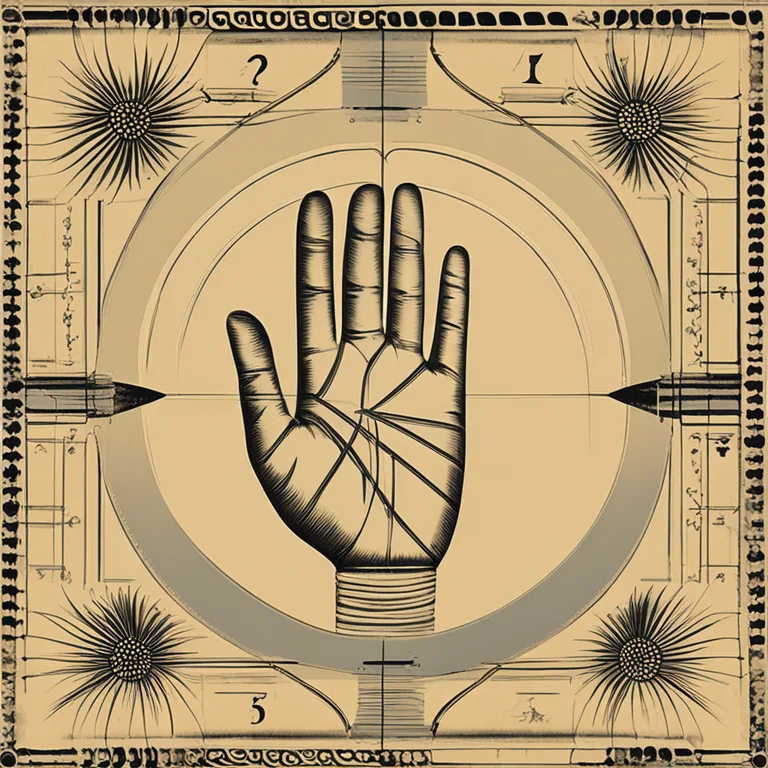
The Uniqueness of Palm Lines: A Detailed Insight
Discover the fascinating aspects of palmistry and learn whether palm lines are truly unique to each individual in this comprehensive article.
article by Nora Pennington
Introduction to Palmistry and Individuality
Palmistry, an ancient practice, has fascinated humans for centuries with its promise of revealing a person's character and destiny through the lines on their palms. One of the most common questions practitioners encounter is whether these lines are unique to each individual, like fingerprints. The short answer is a resounding yes. Each person's palm lines are as distinctive as their life experiences and genetic makeup. To understand the concept of uniqueness in palm lines, it's essential to delve into the complexities of dermatoglyphics and the factors influencing these patterns.

Palm Lines and Genetic Factors
Palm lines, also known as palmar creases, begin to form in the womb around the 12th week of gestation and are influenced by genetic factors. These lines are imprints of the fetal movement as well as the developing structure of the hand itself. No two people have identical genetic codes, and thus, the palm lines, which primarily consist of heart, head, and life lines, differ from one individual to another, giving a personalized map that palmists interpret.

Environmental Influences on Palmistry
While genetics play a crucial role in shaping palm lines, environmental influences can also cause variations. Factors such as health, activity levels, and even emotional well-being can modify one's palm lines over time. For instance, significant life events such as traumas or successes can lead to the development of new lines or the deepening of existing ones. As we move forward into 2024, the recognition of such environmental impacts on palmistry continuously refines the art.
Comparison with Fingerprints
The comparison between palm lines and fingerprints is inevitable, as both are used for personal identification. However, while fingerprints are almost completely formed by genetic coding, palm lines are not. The palm's ridges are crystallized into unique patterns at birth and remain unchanged throughout a person's life, allowing fingerprints to serve as reliable biometric identifiers. Palm lines, however, capture a dynamic blend of inheritance and life changes, creating a story rather than a static code.
Consistency of Major Palm Lines
The major palm lines might have minor variations, but they often illustrate consistency in their overall presentation from early life to adulthood. Significant life shifts won't erase the fundamental layout imprinted during fetal development. It is this balance between constancy and change that enables palmists to decode a person’s path while acknowledging their potential for growth and evolution.
Scientific Research on Palm Line Uniqueness
Recent studies in dermatoglyphics have supported the individuality of palm lines. With advancements in technology, palmistry is gaining recognition for its potential in personal analysis. The science of biometrics now acknowledges palms as a feature of secure identification, supporting the concept that palm lines are indeed as unique as the person they belong to.
Implications for Palmistry Practice
Acknowledging the uniqueness of palm lines has significant implications for the practice of palmistry. It elevates the craft from mere fortune-telling to a personalized interpretive science that considers an individual's distinctive traits and experiences. In a world constantly seeking personalized experiences, the one-of-a-kind nature of palm lines offers a compelling personal touch that appeals to those seeking insight into their own lives.
Published: 1/5/2024
Modified: 1/5/2024
More predictions
Come back here soon to learn more about yourself and your future


The Dynamic Nature of Palm Lines
Discover the fascinating reasons behind the changing patterns of your palm lines and how they reflect the story of your life.


The Essence of Palmistry: A Guide to Hand Analysis
Delve into the world of palmistry, the ancient practice of interpreting palms to reveal personal insights and future paths.


Hand Reading: The Essence of Palmistry
Delve into the basics of palmistry, the ancient art of hand reading, and learn how it aims to reveal personality traits and life paths.